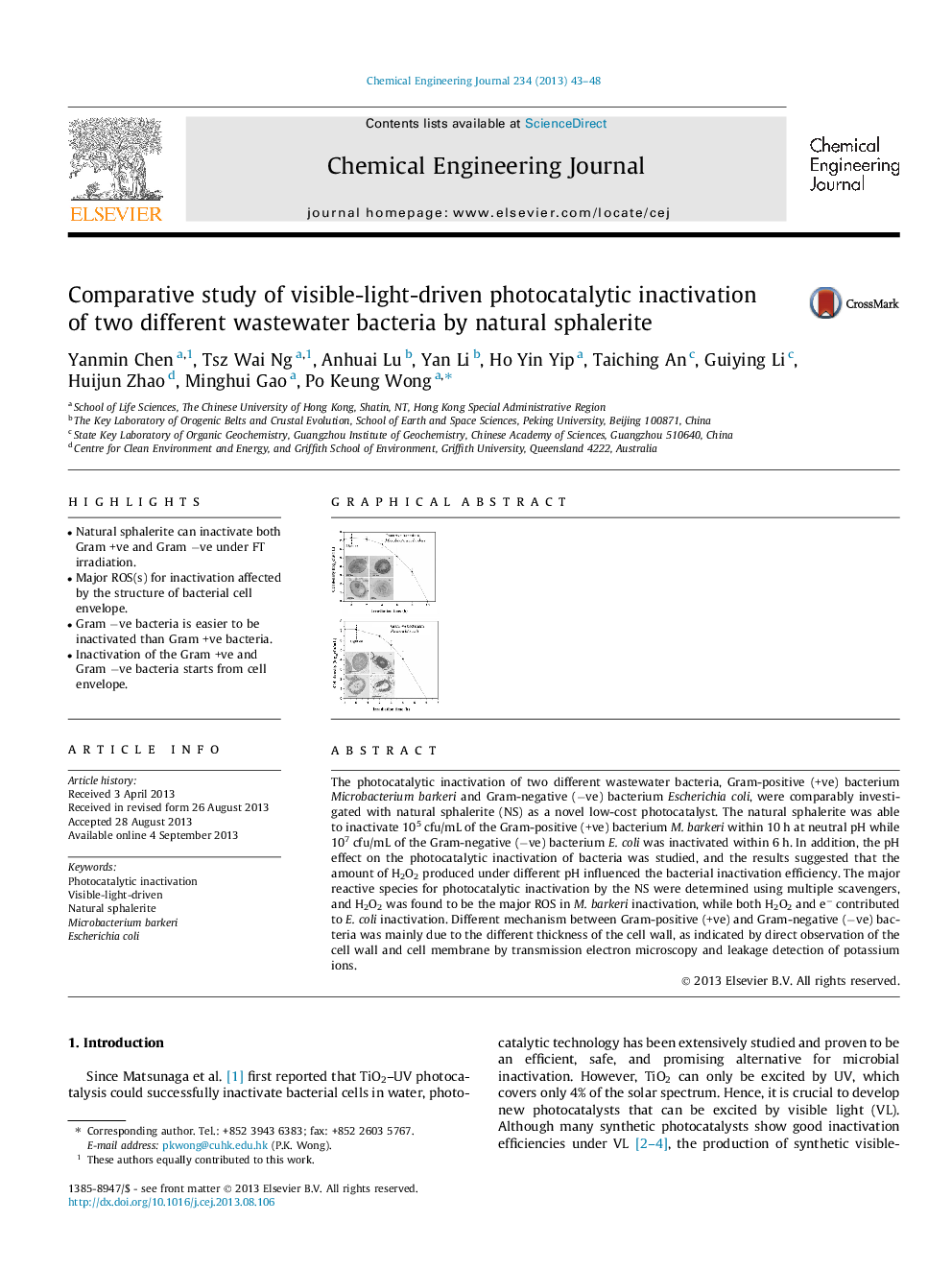| Article ID | Journal | Published Year | Pages | File Type |
|---|---|---|---|---|
| 148065 | Chemical Engineering Journal | 2013 | 6 Pages |
•Natural sphalerite can inactivate both Gram +ve and Gram −ve under FT irradiation.•Major ROS(s) for inactivation affected by the structure of bacterial cell envelope.•Gram −ve bacteria is easier to be inactivated than Gram +ve bacteria.•Inactivation of the Gram +ve and Gram −ve bacteria starts from cell envelope.
The photocatalytic inactivation of two different wastewater bacteria, Gram-positive (+ve) bacterium Microbacterium barkeri and Gram-negative (−ve) bacterium Escherichia coli, were comparably investigated with natural sphalerite (NS) as a novel low-cost photocatalyst. The natural sphalerite was able to inactivate 105 cfu/mL of the Gram-positive (+ve) bacterium M. barkeri within 10 h at neutral pH while 107 cfu/mL of the Gram-negative (−ve) bacterium E. coli was inactivated within 6 h. In addition, the pH effect on the photocatalytic inactivation of bacteria was studied, and the results suggested that the amount of H2O2 produced under different pH influenced the bacterial inactivation efficiency. The major reactive species for photocatalytic inactivation by the NS were determined using multiple scavengers, and H2O2 was found to be the major ROS in M. barkeri inactivation, while both H2O2 and e− contributed to E. coli inactivation. Different mechanism between Gram-positive (+ve) and Gram-negative (−ve) bacteria was mainly due to the different thickness of the cell wall, as indicated by direct observation of the cell wall and cell membrane by transmission electron microscopy and leakage detection of potassium ions.
Graphical abstractFigure optionsDownload full-size imageDownload as PowerPoint slide
